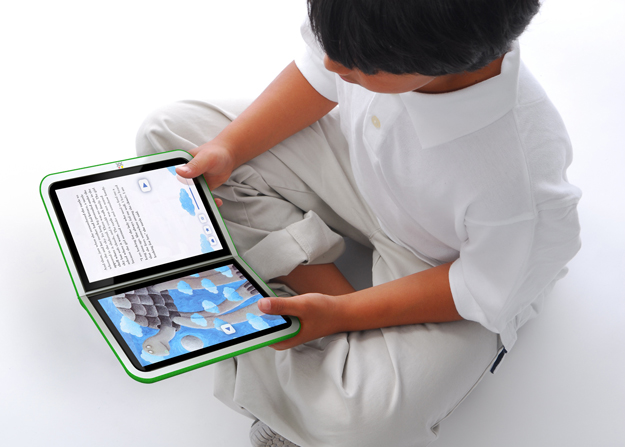eReader or Books: Where Should They Read?
 I love books. I love the smell, feel and even the weight of books. At home and in my office rows and rows of bookshelves hold my favorite friends. As you can imagine, when the Kindle and Nook were first introduced I couldn’t imagine giving up the feel of paper and pages for a slim piece of cold technology. So I resisted. I was also the last person in America to buy a microwave. But I did. When I did succumb it was for a Nook, and eventually a Kindle, not a real kindle, the Kindle App on my iPad. And I happily confess, I’m sorry it took me so long. And as much as I love always having a variety of books close at hand, I’ve realized that as a visual thinker, not all books work for me on the iPad.
I love books. I love the smell, feel and even the weight of books. At home and in my office rows and rows of bookshelves hold my favorite friends. As you can imagine, when the Kindle and Nook were first introduced I couldn’t imagine giving up the feel of paper and pages for a slim piece of cold technology. So I resisted. I was also the last person in America to buy a microwave. But I did. When I did succumb it was for a Nook, and eventually a Kindle, not a real kindle, the Kindle App on my iPad. And I happily confess, I’m sorry it took me so long. And as much as I love always having a variety of books close at hand, I’ve realized that as a visual thinker, not all books work for me on the iPad.
eReader – Fiction books are about the only kind of books I can read on my iPad. Fiction is about story. It’s about enjoying the words and language used to describe the characters and setting. It’s about letting them flow. And letting the words lead you on the journey the writer planned as he crafted the story. No need to take notes or highlight passages when you are reading for leisure and pleasure. Just enjoy the ride. But if you’re a student reading Great Expectations or other books from your assigned reading list; studying characters, plot and other nuances of the written word; reading on a digital device is not going to work. The same is true for reading aloud to a younger child. There are times, even with fiction; you need to get your hands on the real thing.
So why are physical books so much better for visual learners when they have to retain the information?
Books – As a visual learner, I have to read paper copies of non-fiction books. The intent of reading most non-fiction books is to learn or remember what’s being read. And as much as I’ve tried, I cannot remember anything I was supposed to learn on an iPad. There’s real information there, but to learn, a visual person has to interact with what they’re learning, and that includes touching and using the actual book. Visual learners are never going to read five pages of a history book and remember or really understand what it was about. And yes, you can highlight and make notes on digital devices – but visual kids are just not going to do that. Visual learners need to see, touch and do in order to learn and that includes learning while reading.
Sensory – Visual kids are highly sensory. The touch and feel of a book, of the paper and the pages is part of their working memory. When remembering information, they actually remember where it was on the page. If they underlined or took notes, it becomes part of their memory. Touching the screen of a digital device just doesn’t cut it.
Interactive – Visual kids need to interact with the material to learn it. They need to mark up, underline and highlight important phrases or passages. That means using a real pen, pencil or highlighter. Yes, eReaders can do this – but it doesn’t stick in a visual person’s memory that way.
Writable – To learn, visuals need to write and rewrite their notes. Writing while reading helps maintain focus and again, is part of a much needed interaction. For follow up study, it is enormously helpful to write and rewrite the original notes, repeating especially significant information. This is much less likely when reading digitally.
Visual notes – To really remember what’s being read, visual learners can add pictures, draw arrows, underline passages and use color. This can be done in the books themselves, if you own the books! – And makes for some fun reading with plenty of hooks to remember by. If it’s not your book, add pictures, color and doodles to your notes. Doodling and adding color is never going to be as satisfying on an eReader.
Overall, remembering has to be an interactive visual experience for visual learners. So the more hands on and visual you make the learning process and study, the more you’ll remember. And that’s just not going to happen on a digital device. Enjoy the pleasure of story on your eReader, but stick to real books when you need to remember what you’re reading.










